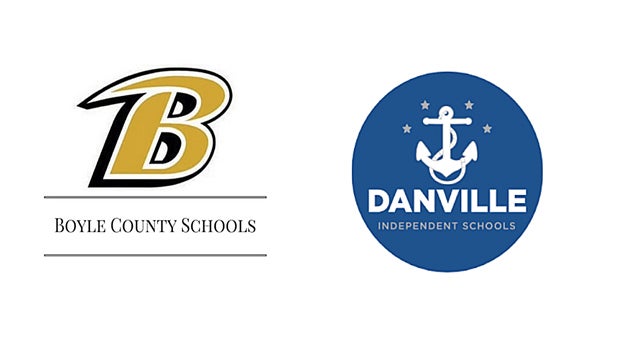School districts discuss School Report Card data, adapting to COVID-19
Published 1:31 pm Tuesday, October 27, 2020
The Kentucky Department of Education recently released annual Kentucky School Report Card data for the 2019-2020 academic year, with a focus on district and school performance on graduation rates, percentage of students who have taken advanced courses, students who are economically disadvantaged, overviews of staff, faculty and community, and other aspects of school life. Due to COVID-19’s interference in the school year, some things weren’t included in the data this year, including star ratings, federal classifications, accountability scores and significant achievement gaps since there were no Kentucky Performance Rating for Educational Progress assessments.
Danville Independent Schools and Boyle County Schools were districts whose data were included in the Kentucky School Report Card data, and some points of consideration about the data especially in light of the pandemic are student home access to necessary technology, students who are economically disadvantaged and four-year graduation rates.
Home access
Mike LaFavers, superintendent for Boyle County Schools, said when it comes to the pandemic, there are relatively hefty home internet requirements when considering programs like Zoom and Google Meet and the need to have multiple applications open at once. The number of students without home access may not include the number of students who don’t have reliable or strong home access, LaFavers said, which can also be a barrier.
According to the School Report Card data on Boyle County Schools for 2019-2020, there are about 2,617 students in the district. For 2018-2019, the most recent data on home access to technology, the student home access percentage was 92%. LaFavers said he doesn’t know if the district would do this during a typical year, but in light of the pandemic, the district handed out hotspots the district paid for, as well as physical devices, and also paid the monthly fee for nearly 500 students in September when all learning was virtual, LaFavers said.
“When we were doing virtual school, it was pretty awesome, and there were three reasons it was awesome,” LaFavers said. “One was we solved that internet problem. Two is we had a device for every kid K-12, and three, our teachers … the training this summer was great, and just the execution by the teachers was fantastic.”
The Danville Independent Schools data on home access to technology for 2018-2019 reflected 85% student home access. According to the School Report Card data on Danville Independent Schools for 2019-2020, there are about 1,833 students in the district. Superintendent Tammy McDonald said the district has provided hotspots to families that requested them in response to the pandemic when it comes to home access.
“At this time we are at 100% home internet access,” she said in an email.
Student home access is particularly important, though students in both districts can now go to school in person, because the pandemic presents a challenge: schools may have to close if Boyle County becomes a red zone.
According to the COVID-19 Mode of Instruction Metrics for K-12 Education from the Kentucky Department of Education and the Kentucky Department of Public Health, which applies when the statewide COVID-19 test positivity is less than 6% and adequate healthcare resources are in place to meet community needs, “schools are advised to suspend in person school activities until the county returns to a lower level of disease activity” when a county is a red zone, meaning there are greater than 25 cases per 100,000 people daily. Orange, yellow and green are the lower levels at which a county can be in terms of numbers of cases.
This is on a week-by-week basis, meaning each Thursday, districts will look at how many cases the county has, and the color the county is will determine the district’s actions for the following Monday through Friday.
For Boyle County Schools, this means if the county becomes a red zone, students will not return to in-person classes the following week. Only if the county becomes orange or a lower level will students return.
“I know people in the community want consistency, and our goal is to create that, but I don’t know — with the system in place, it may be very difficult to create a consistent learning environment this year,” LaFavers said, because he said it will mean districts will “go in and out.”
Danville Independent Schools has a slightly different course of action plan. They will also follow the mode of instruction metrics, but McDonald said one thing of note is if Boyle County becomes a red zone, the mode of instruction metrics says small groups of students may still be permitted in the buildings. McDonald said since Danville Independent Schools is following an A/B hybrid model, meaning only some students are doing in-person learning at a time when Boyle County is orange, if the county becomes a red zone, the district could continue its current model or do otherwise.
“We will still look at all data points to make a decision as to continuing with the Hybrid A/B model or to go back to 100% virtual,” McDonald said in an email.
Economically disadvantaged students
Identification of students as economically disadvantaged is “based upon being program or income eligible for free or reduced-priced meals,” according to Kentucky School Report Card data.
Boyle County Schools’ School Report Card data reflects that 51.7% of students are economically disadvantaged in the district. Of these, 71 students are homeless, and 20 students are migrants. Five of the migrant students are also homeless. Danville Independent Schools’ data shows 69% of students are economically disadvantaged. Thirty-two students are homeless, with 29 of those economically disadvantaged, according to the data, and 32 students are migrants, with 28 of those economically disadvantaged.
LaFavers said for Boyle County Schools, the percentage of students considered economically disadvantaged has nearly doubled in the last 15 years. With funds from the federal government, something the district has done to address this is to get class sizes down and strategically address student engagement. The district has found smaller class sizes and a ratio of fewer students to every one teacher to be a key in gap reduction, he said. This allows for closer attention from teachers for each student and also helps hold students’ attention. This is done with every grade level, LaFavers said. LaFavers said the Kentucky Board of Education has taken notice of the district’s gap reduction and at one point, 50 districts visited Boyle County Schools to see how it was happening.
“It really told us that we’re onto something here,” LaFavers said.
For Danville Independent Schools, the number of students who are economically disadvantaged has increased from 1,198 in 2018 to 1,264 in 2020, according to the data. McDonald said there are a large number of programs for at-risk students in place. The Family Resource and Youth Services Center provides families with assistance with supplies such as clothes, food and school supplies, as well as family/parenting education classes. There are other services in place as well.
“We have services for migrant and homeless children,” McDonald said in an email. “In Danville Schools we also have a medical clinic during the school day as well as mental health services.”
Graduation rates
Boyle County Schools’ 4-year graduation rate for 2020 was 97%, according to the data. LaFavers said the graduation rate has been fairly stable in the last six to seven years, but back about 10 years ago, the graduation rate was somewhere around 77-78% each year. LaFavers said the district decided they weren’t going to let students drop out of school and implemented a virtual learning program for students for whom the social aspect of school was causing anxiety, and since then, the graduation rate has risen.
Danville Independent Schools’ four-year graduation rate for 2020 was 88.5%, according to the data, compared to 96% in 2018. McDonald said the district is working to improve this rate and implementing programs to help students prepare better for adult life.
“We have a new principal that is working on a goal to improve this rate,” McDonald said in an email. “We have added more pathways in the last two years to help students stay focused in areas of interest. Additionally, we have added interventions that will provide an extra layer of support for at-risk students.”







